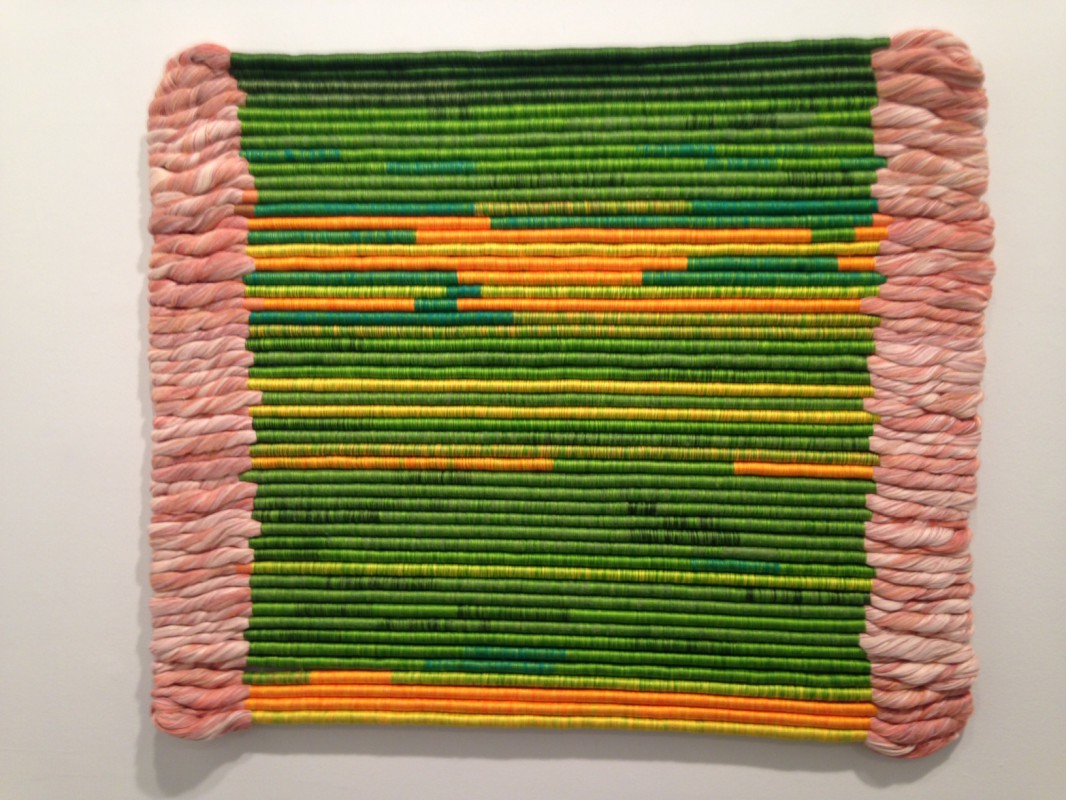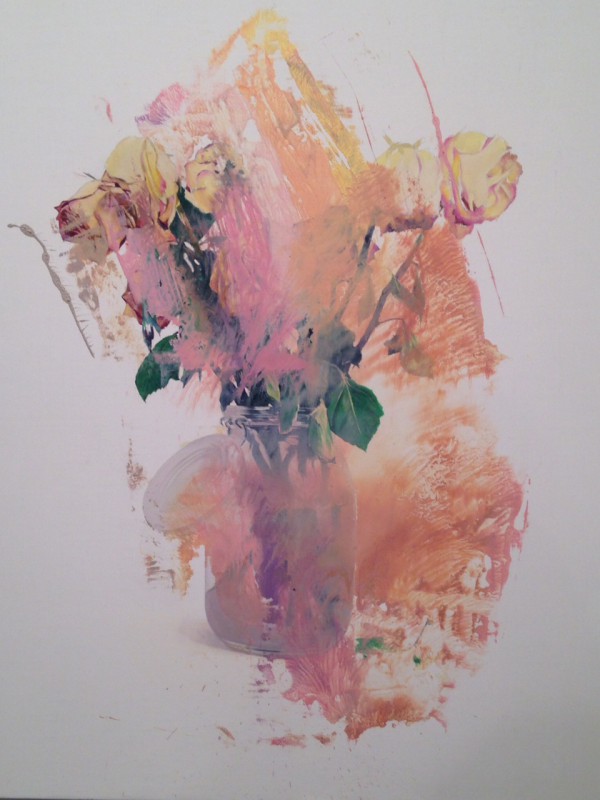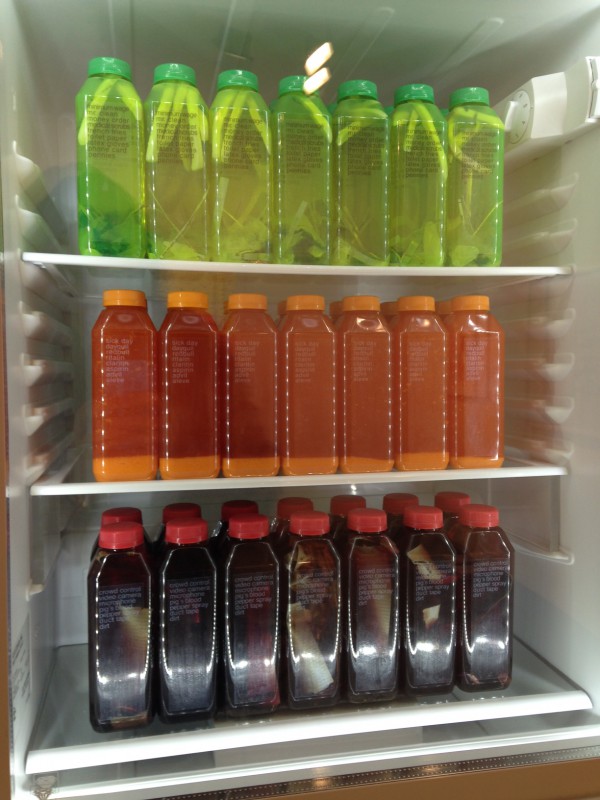Art & Exhibitions
Making Sense of 2014 at the White Columns Annual
A survey of last year, plus art in the form of a smoothie.

A survey of last year, plus art in the form of a smoothie.

Cait Munro


Sheila Hicks, Linen Contained (2003)
Photo: Cait Munro
A swarm of hip, downtown art lovers descended upon White Columns on Tuesday night in an attempt to make sense of everything that’s happened in the art world over the past year. Okay, not absolutely everything, because that would take a lot longer than two hours and require more wine than any gallery would be willing or able to provide. But the White Columns Annual, which has become a calendar staple for the West Village gallery, has cornered the market on a group show that aims to navigate, negotiate, and engage with the ever-evolving complexities of the New York art scene on a yearly basis.
In order to keep the vision fresh, each year White Columns appoints a new curator for the show. This year it’s Cleopatra’s, a Brooklyn-based exhibition space and curatorial collective comprised of Erin Somerville, Colleen Grennan, Bridget Finn, and Bridget Donahue.
The Annual has been heralded by the likes of Holland Cotter, writing for the New York Times about last year’s show, as being important viewing for any true art connoisseur due to its “unobvious, un-Chelsea choices.” While this year is no different (there are names you’re unlikely recognize), there’s an infusion of works by established artists (including Sigmar Polke, Louise Lawler, Sarah Charlesworth, Carrie Mae Weems, and Maria Lassnig). Some of these pieces are from the past year, while others date back to the ’60s and 70s.

Van Hanos, An olive branch (2014)
Photo: Cait Munro
Despite this departure, it’s clear that no one work is valued more highly than the next, at least in the context of this exhibition. In fact, due to the absence of wall labels, you’ll have to swipe a print-out from the front desk if you want to identify the creator of your favorite work at all. “Through the re-contextualization of artworks encountered in other circumstances and contexts, the exhibition hopes to establish…a new narrative, a conversation, of sorts, amongst artists and artworks,” a press release explains, countering any potential argument about the inclusion of these more recognizable artists before it can even be made. And to be fair, for an up-and-coming artist, to have their work placed in a dialogue with Polke, Lawler, or Weems can only help their transition from “emerging” to established in their own right.

Jeanette Mundt, Red Teetons 3 (red) (2014)
Photo: Cait Munro
The show maintains an easy, fluid mix of painting, sculpture, photography, and video (don’t forget to poke your head into the room across from the front desk or you’ll miss the almost two-hour continuous loop of short films from Lassnig, Keiichi Tanaami, and others).
If you enter the gallery off Horatio Street, Josh Kline’s Problems, the first “juice art” I’ve ever seen, will greet you ready to poke fun at your juice-cleansing New Years resolutions. Meant to lampoon the $8 smoothies that have become ubiquitous at overpriced grocery stores in newly-gentrified neighborhoods, one of Kline’s drinks is labeled “minimum wage,” and allegedly contains Mr. Clean, money order, medical scrubs. French fries, toilet paper, Latex gloves, a phone card, and pennies, which come together to produce a Day-Glo green color. Another beverage is called “sick day” and is made of DayQuil, Red Bull, Ritalin, Claritin, Aspirin, Advil, and Aleve. It looks disturbingly like a Bloody Mary.

Josh Kline, Problems (2015)
Photo: Cait Munro
If you look up and to the left, you’ll spot Lily van der Stokker’s Yelling Women, a pink, wooden cloud that reads “only yelling older women in here/nothing to sell,” a sign I’m sure many yelling women of all ages would be proud to display. In the next room, two large, painterly Star of Davids made of wood and canvas dominate with colors, symbols, and a grocery list that includes “oranges,” “cabbage,” “ketchup,” and a decision between “brown vs. white rice.” Beside it, a small Lawler drawing on vinyl is almost dwarfed, until you take a moment to realize that it’s an artwork within an artwork—in the unassuming black-and-white still life of wine glasses, cigarette butts, and plates, a tiny rendition of an On Kawara Date painting hangs on the wall.
The Annual is like that—it takes several walks through to really see everything, and even then you’ll inevitably leave feeling like there was something you overlooked, or didn’t read enough into. But if this show is truly a reflection of 2014 (and, by default, what’s to come in 2015), then that feeling is probably for the best.
“Looking Back–The Ninth White Columns Annual” Selected by Cleopatra’s will be on display at White Columns from January 13–February 21.